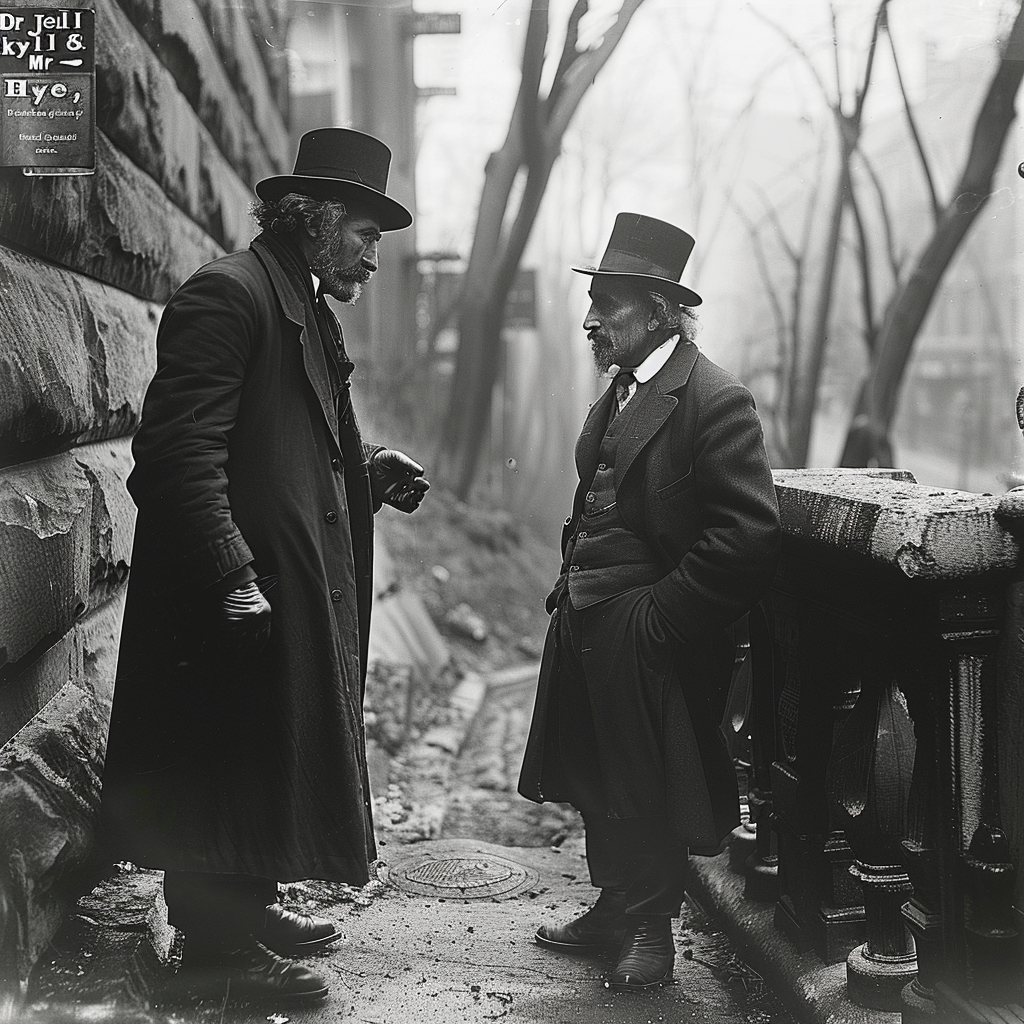Historical Background and Significance
In the early 20th century, the American film industry was in its nascent stages, experimenting with various genres to captivate audiences. Among these early cinematic endeavors was the 1908 premiere of “Dr. Jekyll,” a silent film adaptation of Robert Louis Stevenson’s novella “Strange Case of Dr Jekyll and Mr Hyde.” This film, directed by Otis Turner and produced by the Selig Polyscope Company, holds the distinction of being America’s first horror movie, marking a significant milestone in the evolution of the horror genre.
The early 1900s were a period of burgeoning creativity in literature and cinema, with horror emerging as a particularly intriguing genre for both readers and viewers. Stevenson’s novella, published in 1886, delves into the duality of human nature, a theme that resonated deeply with audiences and provided rich material for film adaptation. Turner’s 1908 adaptation capitalized on this fascination, translating the eerie narrative into a visual medium that would leave a lasting impression.
The cultural landscape of early 20th-century America was ripe for such explorations. The rapid urbanization and industrialization of the period brought about significant societal changes, creating an environment where stories of inner turmoil and hidden identities found a receptive audience. “Dr. Jekyll and Mr. Hyde” tapped into these anxieties, offering a compelling cinematic experience that juxtaposed the familiar with the uncanny.
Otis Turner, an influential figure in early cinema, directed the film with a keen eye for the dramatic potential of Stevenson’s story. The Selig Polyscope Company, known for its pioneering efforts in the film industry, produced the movie, further cementing its role in the development of cinematic horror. The film’s premiere was a notable event, garnering attention for its innovative approach to storytelling and its effective use of the silent film medium to convey suspense and horror.
The initial reception of the 1908 premiere of “Dr. Jekyll” was largely positive, with audiences and critics alike praising its ability to evoke a sense of dread and fascination. This early success paved the way for future horror films, establishing a framework that would influence the genre for decades. Comparing “Dr. Jekyll and Mr. Hyde” to other early horror films, such as “Frankenstein” (1910) and “The Cabinet of Dr. Caligari” (1920), highlights its foundational role in shaping the conventions and aesthetic of horror cinema.
In summary, the 1908 adaptation of “Dr. Jekyll and Mr. Hyde” by Otis Turner and the Selig Polyscope Company stands as a pivotal moment in American film history. It not only introduced audiences to the horror genre but also laid the groundwork for the thematic and stylistic elements that would define horror cinema in the years to come. This film, with its historical significance and cultural impact, remains a cornerstone in the study of early American cinema.
Plot Summary and Cinematic Techniques
The 1908 premiere of “Dr. Jekyll and Mr. Hyde” marked a significant moment in cinematic history, presenting audiences with one of the earliest adaptations of Robert Louis Stevenson’s iconic novella. The silent film, though condensed due to its limited runtime, adeptly encapsulates the duality of human nature central to Stevenson’s story. Dr. Henry Jekyll, a respectable scientist, concocts a potion that transforms him into the malevolent Mr. Hyde, enabling a visceral exploration of his darker instincts. The narrative arc follows Jekyll’s initial curiosity, his subsequent addiction to the transformation, and the ultimate tragic consequences of his experiments.
In the absence of spoken dialogue, the film relies heavily on intertitles to convey essential plot points and character motivations. These intertitles are complemented by the actors’ expressive facial movements and exaggerated body language, which are crucial in silent cinema for communicating emotion and tension. The portrayal of Jekyll’s internal struggle and Hyde’s malevolence is vividly brought to life through actor performance, with particular emphasis on eyes and gestures to signify the shift between personas.
The special effects employed in the 1908 adaptation were groundbreaking for their time. The transformation scenes, where Dr. Jekyll morphs into Mr. Hyde, were achieved through a combination of clever editing, makeup, and lighting techniques. Makeup artistically delineated the physical differences between the characters, with Hyde’s appearance being notably more grotesque and menacing. Film historians note that these early special effects set a precedent for future horror films, establishing a template for depicting physical transformations on screen.
Cinematography and set design further enhance the film’s eerie atmosphere. Shadow play, achieved through strategic lighting, amplifies the suspense and horror, creating a stark contrast between the safe, well-lit spaces of Dr. Jekyll’s life and the shadowy, oppressive environments associated with Mr. Hyde. The sets, though simple, are meticulously arranged to reflect the duality of the protagonist’s existence, reinforcing the film’s thematic core.
Insights from contemporary and modern film critics highlight the 1908 adaptation’s influence on the horror genre. Reviews from the period praised its innovative techniques and compelling narrative, while contemporary analyses appreciate its historic significance. Restored footage, where available, offers a glimpse into this pioneering work, underscoring its lasting impact on cinematic storytelling.

